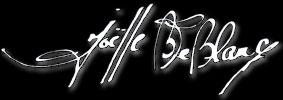ENGRAVING
« The Sublime Emerges From The Bite »
History
The history of etching is closely related to the invention of paper by the Chinese, approximately 105 years A.D.
As far as the Western World is concerned, it had to wait until the 16th Century, with the introduction of techniques for paper making, coming from the East. It is then that could be found the first etchings set on metal stand as well as the techniques for soft cutting, burin, etchings, ancestral gestures still applied today.
Goal
That the image be available to the largest number of people.
Definitions
Intaglio Printmaking
Burin Engraving
Dry-Point Engraving
Etching
Stanley William Hayter’s Method
Hayter (Stanley William)
They wrote the legend or engraving
Intaglio Printmaking
“Intaglio printing” refers to ail those methods of etching or engraving on metal plates, usually copper or zinc, where the grooves retain ink while the upper surface is meticulously wiped clean.
There are two major technical approaches :
– In direct engraving, the metal is directly engraved with such tools as burins, dry-points, roulettes, or mezzotint rockers.
– Acid-bath methods comprise a number of approaches characterized by lines or textures etched by an acid that corrodes unprotected metal surfaces.
Burin Engraving
With its extremely sharp tip and a mushroom-shaped handle for dexterity, the burin tool produces clean lines, raising metal shavings in the process.
Burin techniques were originally developed to reproduce the visual qualifies of master paintings and drawings, but today they are used to create works of expressive originality.
Dry-Point Engraving
The dry-point needle has a round metal shaft with a sharp point.
It ploughs through the metal, raising a burr on either side of the line.
This fragile metal burr holds ink during printing and gives lines a soft, blurred quality.
However, the burr tends to wear down under the pressure of the press, so this method produces only very small editions unless the plate is steel-plated through electrolysis.
Etching
This term refers to those methods by which metal plates are etched in acid. To make the matrix, the metal must be protected by varnish for white areas, and exposed where the drawing must be bitten by acid.
The prepared plate is then immersed in an acid bath and the metal etched more or less deeply, depending on the duration and strength of the bath.
Stanley William Hayter’s Method
This method results in several colours from a single plate in a single pass.
The plate’s matrix must be in three levels.
Three ink colours of different viscosities are used, and inking requires two rollers of varying hardness.
The method relies on the ability of less viscous inks to repel more viscous inks, similar to lithography.
The ink is thinned by adding linseed oil.
Thus, the liquid ink repels the viscous ink, and the two colours do not mix.
The effect of putting a liquid in over a viscous ink is different, the thicker base accepts the thinner top, and thus the two colours are blended.
The process begins with an initial intaglio inking using the thinnest colour.
The second, more viscous colour is then applied with a hard roller which deposits ink only on the surface, then a third colour, even more viscous, is applied with a soft roller.
It is also possible to reverse the order in which rollers are used, or inks applied.

1901-1988,
Photo – Derek Hill
British citizen, trained as a scientist, he chose etching and painting to express himself. He settled in Paris in 1926. In 1927, he founded ” l’Atelier 17 ” (counterpoint), where numerous artists also worked (Vierra da Silva, Miro, Picasso, Ernst, Giacometti…). He adhered to the Surrealist Movement from 1934 to 1940.
He imagines and develops new techniques (Hayter Technique) and realizes an abstract work which is very rich in drawings.

Etching and soft varnish 62.2 X 40.3 cm,
MOMA Museum, New York,
Philip C.Johnson Foundation
They wrote the legend of engraving
| . | |||
| Aldorfer Albrecht | |||
| La famille Bailly | Baldung Grien | Bellange Jacques | Blake William |
| Bonnard Pierre | Bosse Abraham | Botticelli | Boucher François |
| Brauner Victor | Bresdin Rodolphe | ||
| Callot jacques | Canaletto | Carrache Agostino | Caylus Anne de |
| Charlet Nicolas | Corneille Michel I | Corneille Michel II | Cranach l’ancien |
| Debucourt Philibert L | Degas Edgar | Denon Dominique | Derain André |
| Devéria Jacques | Didot A Firmin | Didot Firmin | Dix Otto |
| Doré Gustave | Dunoyer de Segonzac | Durer Albrecht | Duvet Jean |
| Etex Antoine | Eisen Charles | Engelmann Godefroi | Ensor James |
| Finiguerra Maso | Forain Jean-Louis | Fragonard Jean | |
| Giacomelli Mario | Goerg Edouard | Goya Francisco de | Graf Urs |
| Granville Jean | Gravelot Hubert François | ||
| Heckel Erich | Hogarth Willam | Holbein Hans | Huet Paul |
| Johannot Tony | Jörn Asger | ||
| Kubin Alfred | |||
| Lucas de Leyde | |||
| Mantegna Andrea | Manuel Deutsch | Messagerie Jean | Miro Joan |
| Monfreid Daniel de | Morandi Giorgio | Munch Edvard | |
| Nolde Emil | |||
| Orbay François d’ | Oudry Jean Batiste | ||
| Pascin Jules | Picasso Pablo | Pollaiolo Antonio del | Prouvé Victor |
| Redon Odilon | Rembrandt | Robida Albert | Rops Félicien |
| Rosa Salvatore | Roty Louis Oscar | Rouault Georges | Ruysdael Jacob van |
| Schiele Egon | Schmidt-Rottluff Karl | Sutherland Graham | |
| Tiepolo Giambattista | Turner Joseph | ||
| Vallatton Felix | Van Laar Pieter | Van Ostade Adriaen | Vieira da Silva |
| Waroquier Henry de | Whistler James |
